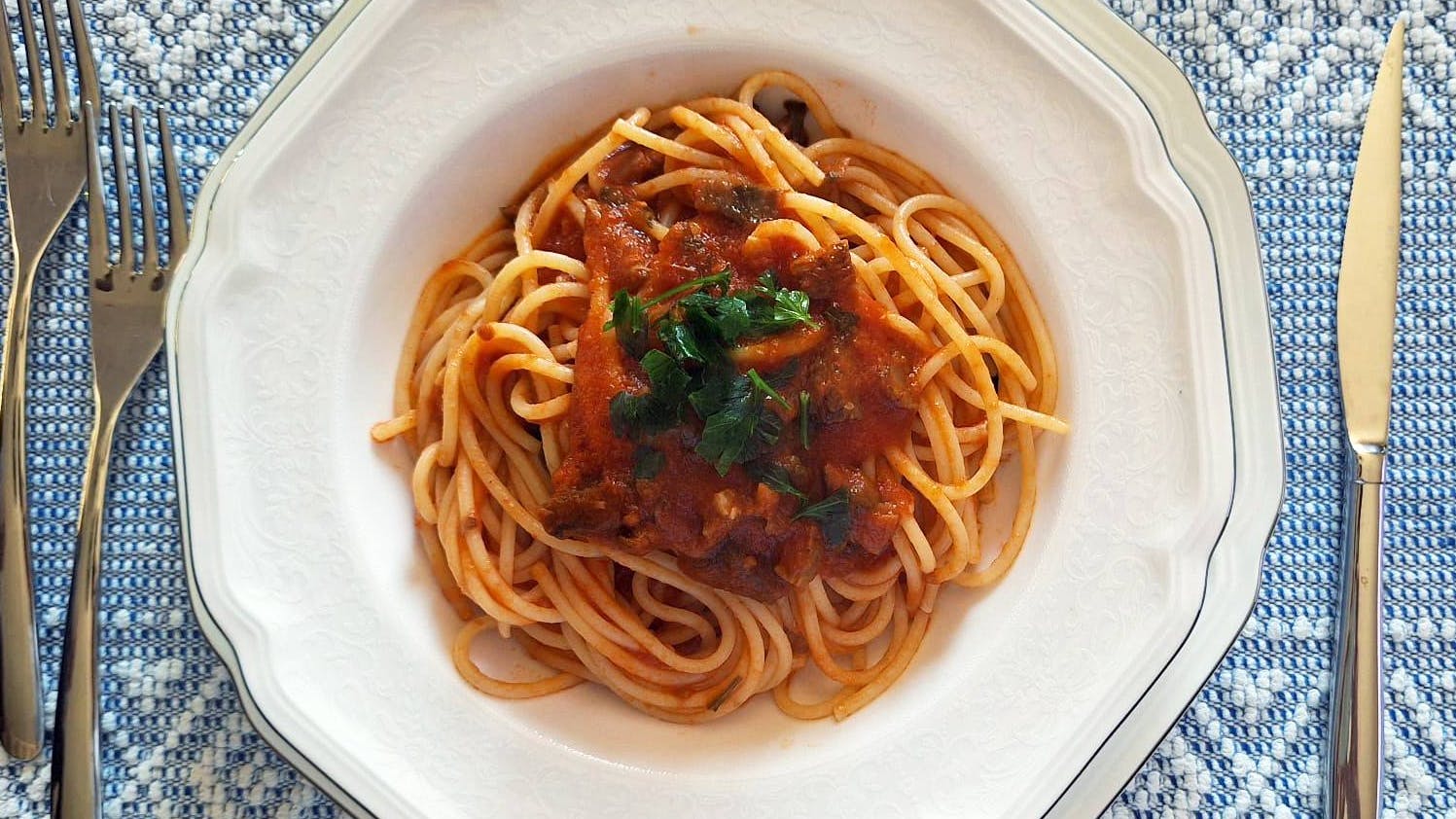

Who hasn’t enjoyed spaghetti at least once at midnight, dressed simply with garlic, oil, and chili pepper? Or, when in a rush to prepare lunch, whipped up a quick dish with a rich tomato sauce? We’re talking about one of the most iconic symbols of Italian cuisine: spaghetti!
World Spaghetti Day
Every year on January 4th, we celebrate World Spaghetti Day. This occasion not only honors a beloved pasta shape and its ability to connect diverse cultures through the universal language of food, but it also aims to educate people about the nutritional value of pasta, its preparation, and its history.
For this special day, we present a unique recipe from our Cesarina Claudia of Spoleto, where spaghetti meets the sweet flavor and crunchy texture of red pine mushrooms.

“These mushrooms hold a special place in my family; my father and I love foraging in the woods to find this fantastic variety. We roast them or use them to make this delicious sauce, which brings an incredibly intense and unique aroma to the dish”.
Spaghetti with red pine mushroom sauce
Autumn-flavored spaghetti for an original and delicious dish
Ingredients
- 3-4 red pine mushrooms
- 1 bunch of parsley
- 1 clove of garlic
- 500 ml (2 cups) of tomato purée
- Chili pepper (to taste)
- Olive oil
- Salt
- Black pepper
Method
- In a pan, heat some olive oil and add finely chopped parsley, chili pepper, and garlic cut into small pieces. Sauté for two minutes.
- Add the red pine mushrooms, previously cleaned and chopped, and let them cook for a few minutes to absorb the flavors.
- Stir in the tomato purée, season with salt and black pepper, and bring to a boil. Lower the heat and let it simmer for 30-40 minutes.
- Cook the spaghetti according to the package instructions, then toss them with the red pine mushrooms sauce.
- Garnish with fresh parsley and serve.
Spaghetti: from the East with passion
There are many stories about the origin of spaghetti, just as many nations claim its invention. However, one thing is certain: it was not brought to Italy by Marco Polo on his return from China.

The most credible theory is that spaghetti originated in a region of Asia corresponding to present-day Pakistan, where it was a byproduct of pasta-making and was prepared for the servants of Sultan Bahawalpur. Legend has it that the Sultan’s son, wandering through the palace kitchens, stumbled upon this pasta and was charmed by it. Its unusual shape reminded him of the kingdom's soldiers. Not coincidentally, the name “spaghetti” is thought to derive from "sipahee", which means "soldiers". Thanks to the Sultan’s son's interest, spaghetti gradually found its way into the upper classes.
The arrival of Spaghetti in Italy thanks to the Arabs
Spaghetti has its origins in the East, not only in its shape but also in its primary ingredient—durum wheat flour, which was already widely used by Arabs for couscous—and its drying process, a technique exported by the Arabs to Mediterranean countries.
Spaghetti was introduced to Italy by the Arabs during the Middle Ages. At that time, it was still a luxury item, and even during the Renaissance, it was only available to the elite. It wasn’t until the 19th century, with the advent of industrial production and the consequent drop in prices, that spaghetti became accessible throughout Italy, including to the lower classes. Its affordability made it the perfect food for religious fasting days when meat consumption was prohibited.
It was also in the 19th century that the word “spaghetti” made its debut in the Italian dictionary. In 1844, a recipe for one of the simplest and most iconic dishes ever created—spaghetti with San Marzano tomatoes—was published.

From Italy to the world
During the wave of Italian emigration in the late 19th and early 20th centuries, spaghetti conquered new territories, first in the United States and then across the globe.
Today, spaghetti is one of the most beloved dishes worldwide. Thanks to its versatility, it has seamlessly adapted to the traditions of various countries, becoming a natural part of their cultures. In the U.S., there’s spaghetti with meatballs; in Asia, there are rice or soy-based versions; and there are now about 200 recognized variations of spaghetti—thin, thick, round, square, and more.
Spaghetti beyond the kitchen
Spaghetti has transcended its culinary roots to earn a place of honor in pop culture. Beyond lending its name to a film genre, the spaghetti western, it has starred in unforgettable movie scenes (like in Miseria e nobiltà with Totò and An American in Rome with Alberto Sordi) and even inspired famous pranks. One such example is the BBC hoax that convinced viewers that spaghetti grew on trees in Switzerland (as detailed in this article)!
